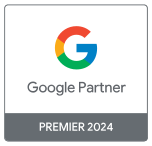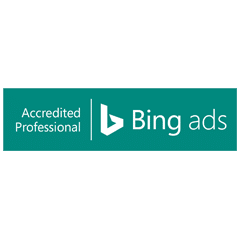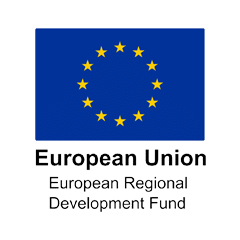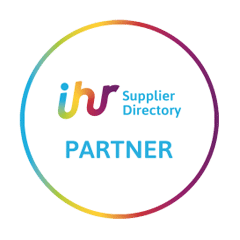
top 5 ways to use personalisation within your business.
80% of consumers are more likely to purchase from a brand that provides personalised experiences. Read on to see how you can implement this essential marketing tactic.
First of all, what is personalisation in digital marketing?
In summary, personalisation is the ability to deliver personalised user and/or visitor-specific content to individual customers. Businesses can do this based on available data points – those that might be first party data e.g on your customers and their preferences, their purchase history or search habits, data that has been made available or revealed to you using any number of tools e..g those that might identity companies visiting a website based on IP address matching for example.
A good example of personalisation is Spotify. When you log in on Spotify, you are presented with personal playlists ‘Discover Weekly’ & ‘Release Radar’ and these are built by AI technology compiled from your usage data and they seek to solve the ‘I want to find new music’ pain point.
Personalisation is pretty much expected these days too, people want to feel valued by their favourite brands & businesses, and so it’s less about personalisation per se and more about viewing personalisation as a fundamental part of user experience. Regardless of whether that platform is a website, an app, software or anything else customer-facing. Personalisation within marketing comes in many flavours so let’s take a closer look at our top 5 tactics!
Website Personalisation.
When it comes to website personalisation, the main action businesses can take is to run dynamic content i.e. content that changes to better serve a customer or industry. There are a number of tools but we can recommend Google optimize as a good place to start – the platform allows you to serve personalised experiences that promote engagement and improve conversions. Google Optimise allows you to experiment and determine what converts best with your visitors, Optimize allows you to personalise your website and tailor the content to each unique user, very exciting stuff. So rather than just filling your homepage with generic creative, you can instead be smarter with your approach. So how might this look? Well, one simple example would be to reference the location of the visitor within your headline – if you know they are London-based then perhaps we might change your page headline to say ‘Serving brands in London’ rather then ‘Serving brands nationwide’. It’s a small tweak but it’s all about relevance. Changes likes this can be a set-and-forget strategy, once it’s in place you can allow it to run without too much ongoing input. This really is the tip of the iceberg and we’ve seen examples where the client industry is referenced in the headline e.g. ‘Serving SAAS businesses in London’ and even references to the specific company visiting and the inclusion of their logo e.g. ‘Ready to support Salesforce in London’. The opportunities here are endless but what works for one brand may not be appropriate for another. Regardless of how far you take it, I hope you can see just how fantastic this strategy can be to maximise the likelihood of driving conversion.
Account Based Marketing.
Another effective way you can personalise your marketing efforts is by using AMB aka Account-Based Marketing. This tactic requires you to personalise the ad campaign in its entirety, reaching and serving ads to your target company profiles only. This campaign typically runs as a display image ad format and you can group your target customers by industry or even serve individual ads to individual companies. In this way, you might reference a casestudy or a whitepaper from the specific industry of the audience, or perhaps you’ll include a mention of their specific competitors your solution has supported in the past. Ultimately, it’s about driving the click and staying front of mind with your target audience. Let’s take a look at the two main ABM tactics.
One-to-one ABM is a hyper-targeted strategy which, works on an individual company basis, an approach in which you target your most valuable accounts, typically the top 1 or 2, and treat them as their own individual markets by tailoring content to appeal specifically to the targeted account. By using your resources to engage with each account in a one-to-one ABM campaign. This approach typically expands beyond a Display campaing to instead encompass all touchpoints with the prospect – it might include an email element, direct messaging, post or even the trusty phone call. In nearly all cases, this is an enterprise approach, one where the potential outcome and deal size warrants the resource-intensive nature of the approach.
One-to-many ABM, is another, perhaps more common, ABM tactic, using the principles of one-to-one and applying them at scale to a larger number of target accounts. You might want to use this tactic if the aim is to impact a larger pool of decision makers, if there is a need to educate audiences on your solution (perhaps it is new), or if you want to identify and build an active pipeline as all interactions by company name can be tracked and shared with sales teams for prioritisation. A great way to organise your one-to-many ABM strategy is to focus on groups of target accounts which can be treated as individual markets, these groups could be split out at industry level such as finance, manufacturing, healthcare etc. Then you can tailor content to resonate with each group.
Retargeting your way to the top.
Retargeting is one of the best personalisation tactics. Let’s look first at paid social retargeting – here you can fine tune the targeting to the right audience based on their previous engagement with a post, webpage visits, video views, abandoned carts and so much more. People who have already engaged in some way with your business are much more likely to convert from browsing to buying. A great way to retarget your ads in a personalised way is to implement dynamic product ads as these ads enable you to automatically promote your most relevant products to people who have already expressed an interest in those products on a previous visit to your website. And the same strategy can be deployed on Google Ads a dynamic display campaign. Genius! Most people forget to consider retargeted email as part of this strategy, but with clickthrough rates averaging a whopping 10x higher than the average display ad you’ll want to be doing both to have a more comprehensive approach.
Let’s talk chatbots.
For most of us, hour long customer service phone calls are a thing of the past. Chatbots are a great way to create a superior customer experience and reduce hours spent on manual, repetitive tasks. We’ve seen Facebook Messenger chatbots lead the way in the recent past as the platform data that Facebook already has takes the pain away from laborious user input e.g. name and email address can be pre-populated. Similar solutions can run seamlessly on a website and engage users based on the page they are on, their inaction or their intent to exit the website. Whatever the interface, most can automate data capture tasks and, in many cases, problems can be resolved without any human interaction at all. For conversations that fail to resolve the issue, user details can be collected and shared with customer support, fail points can be identified and changes to the chatbot flow can be implemented to improve the experience. Ultimately, chatbots can ease interactions with customers, be available 24/7, save time and money, reduce website bounces, and ultimately increase conversion rates.
How to personalise emails.
We’ve touched on email already but let’s take a closer look. If you’ve ever Googled for answers on the most effective marketing channel, you’ll no doubt see email listed somewhere at the top. It’s a great tactic, always has been, and probably always will be. It’s the one channel that, as a brand, you truly control. Forget pixels, forget cookies, you have everything you need with just a name and an email address. Sending personalised emails by setting up automation that tailors’ specific products to specific people, sends a thank you email post-purchase, a birthday email discount etc. will all help to strengthen the relationship between your business and your customers. Not only will thye be reminded of your offering, they’ll feel valued and better connected to your business. Let’s illustrate the point, a recent Experian report suggested that Birthday emails are capable of generating roughly 342% more revenue than a regular promotional email. So, it is pretty clear that sending customised emails can dramatically improve results by delivering quality content and adding that personal touch. Not all changes need to be seen as a chore – personalising the ‘To’ field to reference the user’s name, adding this to the subject field or using tools to personalise image content within emails can vastly improvemet engagement and response rates.
If you have any questions on the points referenced above or if you are looking for a partner to help create or drive your digital personalisation strategy, Ality are here to help, get in touch today.















